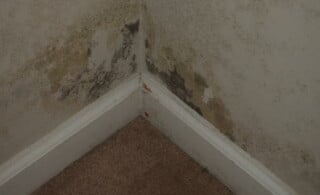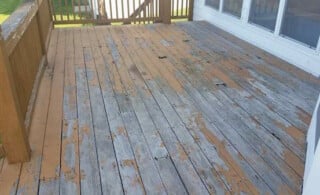
Do-it-yourself (DIY) projects are good for you. They encourage you to disconnect from technology, they relieve stress, and they provide a sense of satisfaction. That’s why so many weekend warriors can’t wait to tackle that next home repair or renovation project. However, these jobs can be hard on your body, especially your back, so it’s important to use your best judgment when taking them on. Here are five common mistakes that send homeowners to the chiropractor with back pain or injuries.
1. Forgetting to Warm Up
While most people don’t consider a home improvement project a workout, that’s exactly what it is. Think about it. Climbing, walking, reaching, and lifting are all terms you hear at home and at the gym. When done correctly, DIY repairs and renovations are a great way to stay in shape, and like any good workout, you should always start with a warm-up to loosen up your muscles and help prevent injuries. You should always check with your doctor or trainer before you try a new exercise, especially if you already suffer from lower back pain, and make sure to follow these safe stretching tips:
- Never stretch cold muscles. Get moving with a quick, 5- to 10-minute walk around the house or the yard to warm them up.
- Take it slow. Bouncing and/or jerking motions can cause pain and injury.
- Don’t stretch too far or too long. You should feel mild tension, but it shouldn’t hurt.
- Hold the stretch for at least 5 seconds, and try to relax into it.
2. Using the Wrong Gear
One of the great things about doing it yourself is the time and money you save on your projects. There is one thing you should never scrimp on, however, and that’s the gear you need to get the job done safely. Equipment that is damaged, broken, or out of date puts you at risk for injury. That goes for everything from shoes to ladders.
- Make sure your tools are in good condition and well suited for you. The most obvious back injury from faulty equipment is a fall from an unreliable ladder, but a rake with a broken handle or a workbench that is too short for someone your height can be bad for your back as well.
- Thanks to technology and a more profound understanding of ergonomics, there are tools and equipment you can buy to get the job done more quickly and put less strain on your body. Telescoping handles help you clean windows and paint ceilings without reaching. A wheeled garden seat can reduce the stress on your back from the upward and downward motions involved in gardening. Using lifting straps and harnesses — along with maintaining proper form — can save your back during heavy lifting.
- Good shoes can also help protect your back by promoting proper gait and alignment, so leave the flip flops in the closet, and lace up something with a little more support. Running shoes are a popular option, because they offer motion control, stability, and cushioning.
3. Making the Wrong Moves
It’s not always the big projects that cause the most pain. Activities that involve repetitive motions, like bending, squatting, and reaching, can be just as bad for you as heavy lifting. Painting, raking, and cleaning are some of the most common culprits. Being mindful of how you’re moving can go a long way to preventing a sore, achy back by eliminating the cause of the pain.
- Keep your shoulders and hips square. Instead of twisting your back, move your upper and lower body in the same direction.
- Avoid bending at the waist. Step one foot forward, bend the knee, and keep the upper body upright in a lunge position.
- Avoid standing for long periods with locked knees. Bend your knees slightly, and keep your upper body upright.
- When reaching with one arm, balance yourself by lifting the opposite leg. Place your other hand on another nearby surface for stability.
4. Waiting Too Long to Take Care of Injuries
A back injury is not one to take lightly. After all, back pain is the most common cause of job-related disability and contributes heavily to sick days, according to the National Institute of Neurological Disorders and Stroke (NINDS). That’s why, if you sustain an injury, you should stop working right away and take measures to minimize the trauma. The following steps are not meant to replace the advice of a chiropractor or another medical professional, but they may help you avoid additional pain.
- Immediately after you’ve thrown your back out, try to get into a neutral position. Stand up straight, with your shoulders over your hips. Your back shouldn’t be arched, and you should avoid bending, lifting, and twisting. Squatting is OK, as long as you keep your body in alignment and your knees don’t go past your toes.
- You can use over-the-counter (OTC) remedies to manage the pain, including pain relief creams and tablets. You should also drink plenty of water to ensure your muscles are well hydrated.
- Resting and stretching can be helpful when you use the proper form. Be sure you are leaning or lying on a firm surface, like the floor or a wall, and try hugging your knees to your chest, one at a time.
- Back pain takes time to heal, so you’ll need to be patient. However, if the pain is so severe you can’t walk or function normally, or if the pain lasts for more than a few days, seek care from a chiropractor, physician, or licensed massage therapist. They will help you rule out more serious damage, and they can give you tips on how to manage pain and avoid worsening your injury.
5. Not Knowing When to Call a Pro
One sure way to get hurt is to take on projects outside of your skillset. Even if you’re in tip-top shape, there are plenty of high-risk home repair projects that are too hazardous for you to do yourself. Hiring a professional to do these jobs won’t just save your back. While it costs more up front, hiring a pro can also save you time and money on pricey repairs down the road. Here are a few common jobs that you shouldn’t do yourself, and why you should outsource the work instead.
- Roof repairs, maintenance, and replacement should typically be left to pros with the skills and tools to do the work safely and up to standard. Hire a roofing company that knows how to do the particular job you need and has experience with the right material.
- Tree trimming involves heights, as well as specialized tools and equipment, that most homeowners aren’t comfortable with or qualified to operate. Choosing the right tree service professional for the job will depend on the type of work you need done. Arborists in your area are a good choice when treating diseases, insect infestations, and pruning. Call a local tree removal service to cut them down, or hire a tree trimming professional near you to maintain its shape.
- Landscaping and hardscaping jobs that involve heavy lifting, like loading, unloading, and placing pavers, are particularly hard on the back. A residential landscape contractor can design and build you a stylish patio, and they usually have heavy equipment to help ease the burden.
- Painting is not a difficult task, but all that reaching and the repetitive motions required to change the shade of the interior or exterior of your home is easier for someone who has built up the muscle strength from doing the job day in and day out. So, after you choose your perfect paint color, call a pro to do the work.
- If you have the time and energy, everyday cleaning tasks are probably not back-breakers. However, when it comes to scrubbing baseboards on your hands and knees or cleaning second-story windows, you can save your back by hiring a local cleaning service or calling a professional window washer in your area.
If you are one of the many DIYers who enjoys the challenges and physical exertion that come along with tackling home repair, renovation, and maintenance, don’t worry. Just be careful. Avoiding a back injury — or caring for one you already have — is well worth the investment in time and money it takes to warm up properly, invest in the right gear, and hire out the most “back-breaking” DIY projects.
 Lead Paint Common Sense
Lead Paint Common Sense  How Do I Get Rid of the Moldy Odor in My Basement?
How Do I Get Rid of the Moldy Odor in My Basement?  How to Remediate Mold
How to Remediate Mold  The Reason for Mold Inspection
The Reason for Mold Inspection  Dry Rot: The Invisible Killer
Dry Rot: The Invisible Killer 

Are You Familiar With This Topic? Share Your Experience.